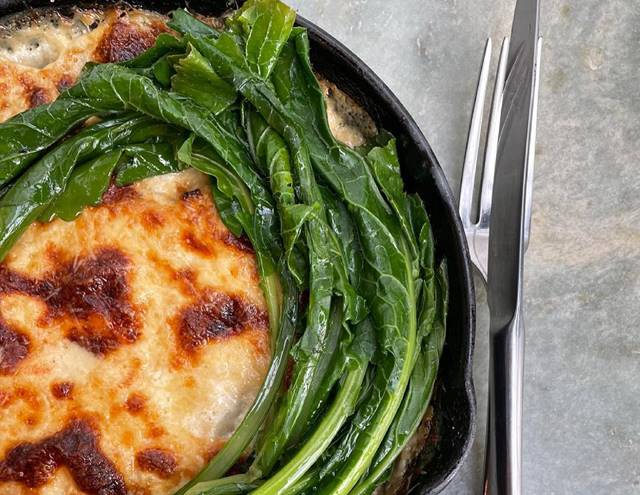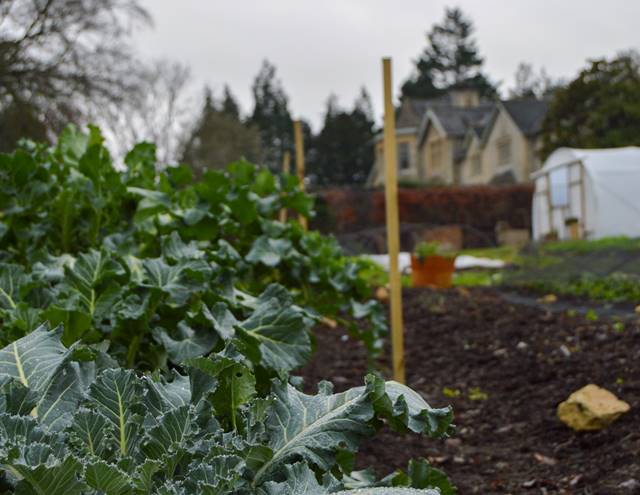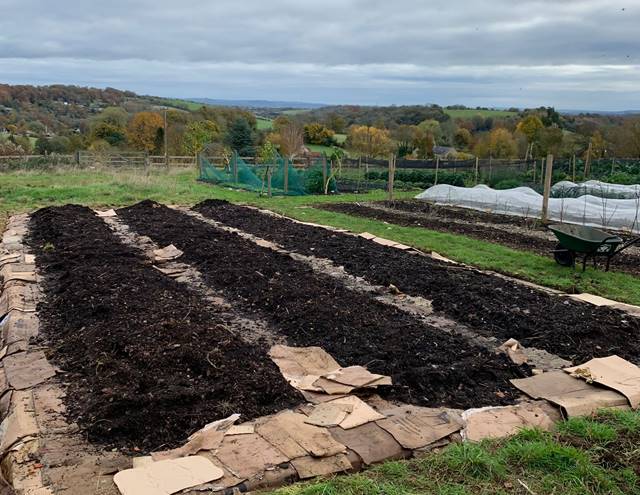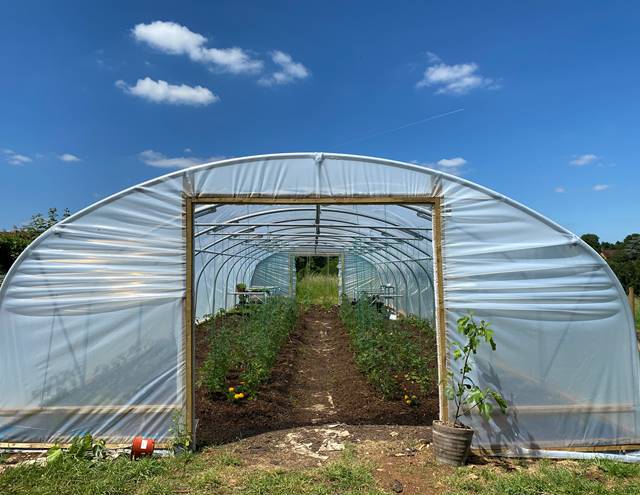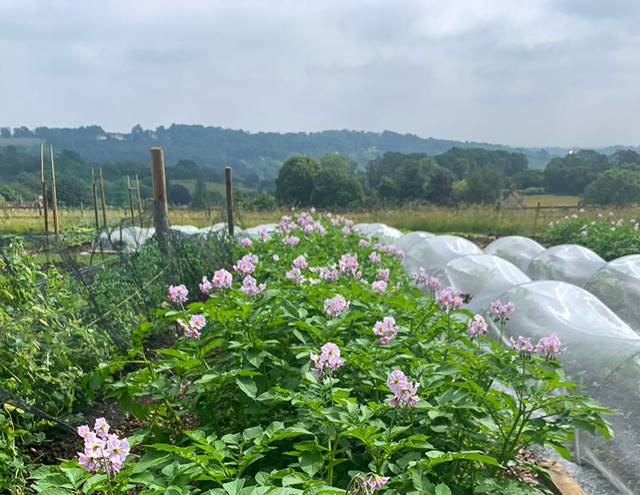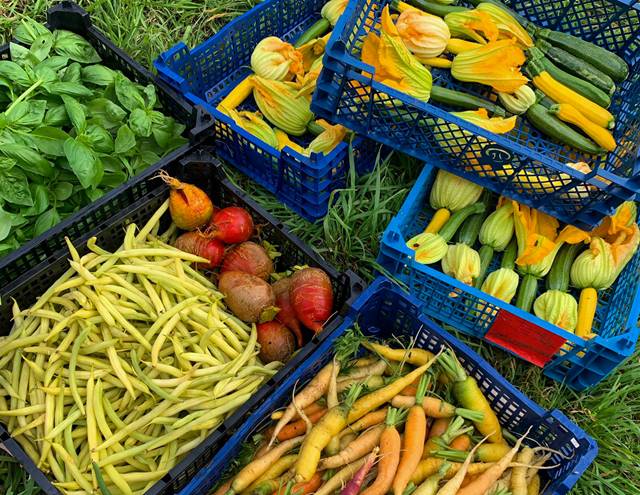I was nervous as I sat at home on holiday watching Storm Eunice blow my fence panels apart. Before our power got cut off I had also just watched a video of a polytunnel in Mells getting ripped to shreds and then pelleted by hail. Our tunnel is on a very exposed site, and although I had faith in the design and how it was put together (by me) I couldn't help think the worst. I had to go in and check on it as soon as the wind died down. It felt like a long drive up the driveway of Homewood, littered with fallen branches, but thankfully I needn’t have stressed. Some minor damage to the doors was as bad as it got. What did surprise me, after my week away, was how much growth there had been inside the polytunnel, spinach, rocket and parsley were more than happy to be out of the wind and rain, and have scarcely been set back by any cold weather, in fact, they are looking as good as ever. By the end of February it might still be light by 6 pm, this makes a huge difference for the overwintered crops and also for how we feel.
A corner has been turned and the dormant stage of the garden is over, (occasional) notes of spring are now in the air and finally, seed sowing can commence once again!
It can be a tricky time of year though. It's important to get that head start on the season, but the cold still lingers outside. Seed packets like to give optimistically long windows of opportunity, maybe hoping some early sowings will perish in cold soil and more seed has to be bought! I found last year that as growing conditions improve, later sowings tend to catch the earlier ones and are often more healthy.
I start all seeds (except carrot seeds) in seed trays or modules under a sheltered environment. They are then transplanted to their permanent location when seedlings are strong enough to be moved. I’m using the polytunnel to shelter them this year, as I've been banned from using the conservatory at home as a greenhouse. The exception has been granted for tomatoes, peppers and aubergines that need that bit of extra warmth to get going.
Lettuce, onions, spring onions, shallots, early cabbage, kohlrabi, beetroot, spinach and parsley are all frost hardy and were sown towards the end of February.
This year I am aiming to produce twice the amount for the kitchen as of last, which isn't too unrealistic as most of the early part of last year was spent creating beds. To make sure I achieve this I have made a few additions. Three new raised beds with wooden sides, two exclusively for mint of which the majority will go to the bar for drinks. I grew mint in one of the regular beds over summer but its runners stretched into the path and even into other beds. I’ve lifted these runners and planted them in the new beds and hope the solid sides keep them contained.
I on the other hand have spread, into the adjacent field, with what I hope will be a pick your own pumpkin patch after the success I had with winter squash and the little maintenance that they needed. There are also a few other plans in the pipeline and I really am excited to see how it all pans out.
All this extra space means more compost for seeds. I had hoped to be solely using our homemade compost but as the garden has grown in size I just don’t have enough. I'm a little bit ashamed to say it, but I used peat-based compost for all my seeds last year. The main reason why I used it, and also why anyone uses it, is its reliability and excellent ability to retain moisture and nutrients while at the same time allowing great drainage, there was nothing I could find that matched it.
Unfortunately, it comes at a great ecological cost. It accumulates at a rate of 1-2mm per year as sphagnum moss slowly decays in the permanently wet bogs. Hardly sustainable at the rate it gets dug up
Peat bogs are also an invaluable habitat for flora and fauna and if left undisturbed they are more effective carbon storers than forests.
It may have great properties but that doesn’t make it okay to use it for an industry that should be seen as good for the planet, and my garden is not more important than the planet. So this year I’m going completely peat-free. So I'm currently experimenting with a few different peat-free composts in different sowing situations with different seeds to make the right choice for the huge amount of sowing ahead. I will let you know what I recommend.
Happy sowing
My new recipe is up - ROOT TO SHOOT CELERIAC SOUP
Until next time…
Darren Stephens
Chef-Gardener, Homewood





